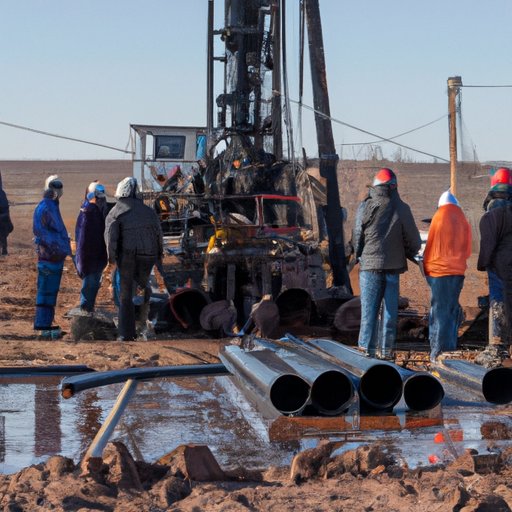Introduction
Drilling your own well can be a rewarding and cost-effective way of securing a supply of fresh water. However, it is important that you do your research and understand the process before attempting to drill your own well. This article provides a comprehensive guide on how to drill your own well, covering topics such as local regulations and laws, identifying the best location for a well, obtaining permits and licenses, securing necessary equipment, locating underground water sources, drilling the well and installing components.
Research Local Regulations and Laws
The first step in drilling your own well is to research local regulations and laws. Depending on where you live, there may be zoning laws or other regulations that restrict where wells can be drilled. It is also important to check whether you need a permit or license to drill a well. You may need to obtain permission from local authorities before beginning the drilling process.

Identify the Best Location for a Well
Once you have established that you are allowed to drill a well in your chosen location, the next step is to identify the best place to locate the well. Consider factors such as the water table levels, soil type and landscape. For instance, if the water table is very low, it may not be possible to drill a successful well. Additionally, if the soil type is sandy, it may be difficult to install a pump or other components.
Obtain Permits and Licenses
Before you can begin drilling, you must determine which permits and licenses are required in your area. In most cases, you will need to apply for a permit from your local council or state government. The application process may vary depending on where you live, so it is important to research the requirements in your area. Once you have obtained all necessary permits and licenses, you can begin the drilling process.
Secure Necessary Equipment
You will need to secure the necessary equipment for drilling the well. This includes items such as a drilling rig, drill bits, pumps, pipes and other components. If you do not have the necessary equipment, you can rent or purchase it from a local supplier. Be sure to research different suppliers to find the best prices and quality.
Locate Underground Water Sources
Once you have secured the necessary equipment, you can begin the process of locating an underground water source. There are several tools available to help you locate water sources, such as water finder devices. Additionally, there are other methods that can be used to locate water sources, including measuring the electrical conductivity of the soil or using a dowsing rod.
Drill the Well
Once you have located a suitable water source, you can begin drilling the well. Determine the desired depth of the well and follow the instructions provided with the drilling rig. It is important to take safety precautions while drilling, such as wearing protective clothing and using appropriate tools. Additionally, you may need to use a pump to remove any debris from the well during the drilling process.
Install Components
Once the well has been drilled, you will need to install the necessary components. This includes choosing the right pump for the job, as well as any additional components such as a water storage tank or filtration system. Ensure that all components are installed correctly and according to manufacturer’s instructions.
Conclusion
Drilling your own well can be a rewarding and cost-effective way of securing a supply of fresh water. However, it is important to research local regulations and laws, identify the best location for a well, obtain permits and licenses, secure necessary equipment, locate underground water sources, drill the well and install components. For more information, visit your local council or state government website.
(Note: Is this article not meeting your expectations? Do you have knowledge or insights to share? Unlock new opportunities and expand your reach by joining our authors team. Click Registration to join us and share your expertise with our readers.)
